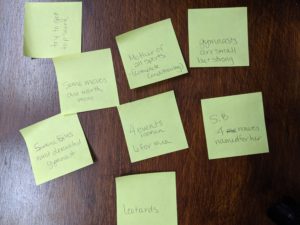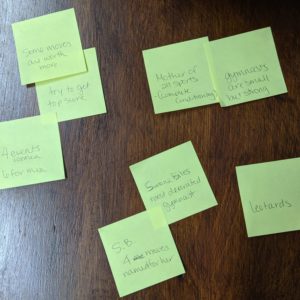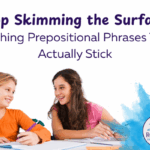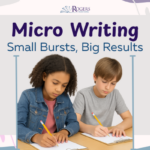Join me for a moment in my writing conference…

My enthusiastic and adorable third grade just finished her draft about how to become a cheerleader and is excitedly sharing it with me. I’m blank, because the ideas in this paper are all over the place. We jump from cheerleading being done on a football field, to the fact that you have to jump high, or cheerleading takes place inside a big gym with judges and an audience, to the fact that you have to try out, and there are tumble classes, and then here’s a different kind of kick, etc. It becomes obvious that this paper is not only not organized, but it also was never planned to be successful.
There is nothing worse than telling a motivated writer that they need to start all over to organize their paper better. In fact, as a writer myself, I refuse to do it. It has never ended well for me. Instead, I make sure that the students plan better before they begin. Everyone is happier.
 I prefer to teach informative writing in two parts: one explaining something they know about, and then a research project. The writing skills are the same and the students get to experience informative writing for a while. So to begin, I have students generate ideas of things they know a lot about what they can explain to someone else. Once they choose their topic, I begin to help them organize their ideas.
I prefer to teach informative writing in two parts: one explaining something they know about, and then a research project. The writing skills are the same and the students get to experience informative writing for a while. So to begin, I have students generate ideas of things they know a lot about what they can explain to someone else. Once they choose their topic, I begin to help them organize their ideas.
I use the topic of gymnastics as my model for the students and begin by taking a stack of post-it notes and model writing a different “thing” I know about gymnastics on each post-it note. I write things like, Simone Biles is the best gymnast in the world, gymnasts wear leotards, grips are used on the bar, it requires a lot of strength and conditioning, etc. Then I give the students post-it notes and ask them to do the same with their own topics.
Now we “clump and dump”. I move the post-it notes around while talking out loud about which ideas are similar and can be discussed together. For example, “I am going to put that Simone Biles is the most decorated gymnast in the world and that she has six skills named after her together. I can also put that the idea is to get the top score and that some skills are worth more than others together.” I complete my clumping of ideas and then it is time for a dumping! (Yes, they laugh). I explain, “All of my clumps have at least two ideas, except for this one. I have that they wear leotards, but nothing else goes with that idea. I don’t think I have enough to write about there, so I’m going to dump this idea.” Then I give the students time to do their own clump and dump.
From here, I do mini-lessons every day on facts, examples, anecdotes, quotes, etc. We add more ideas on our topic in the areas we selected as we do the mini-lessons. For example, I model adding an example of scoring to my scoring clump.
Next, each pile will become a paragraph that is all on one topic. So students write a sentence about what the commonality is in the clump. My example is, “The main objective in gymnastics is to get the highest score on the four pieces of equipment.” I write a sentence for each clump and the students do the same. Now we have a topic sentence for each paragraph. Everything in this one paragraph must talk about scoring in gymnastics.
Students are then ready to write their essays. I promise that it won’t be perfect, but it will be a lot better!




